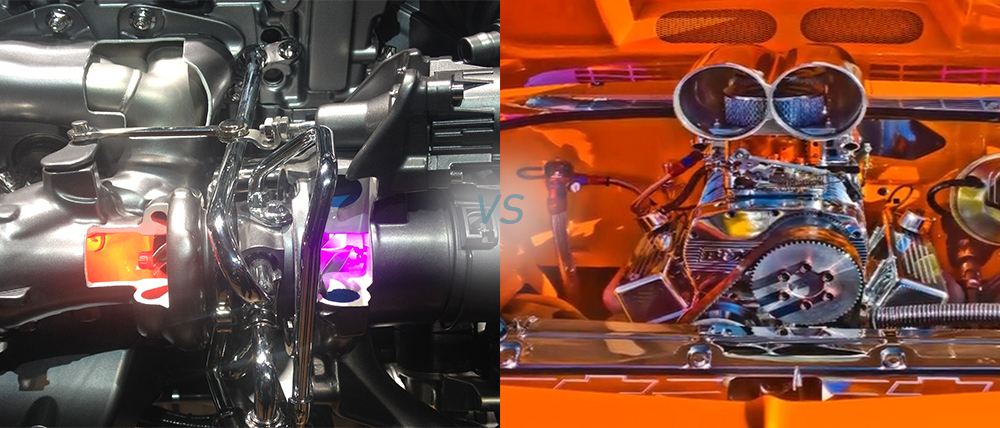It is easy to get confused about the difference between a turbocharger and a supercharger. Basically, they do the same thing. They both feed compressed air to the combustion engine so that the engine becomes more powerful, so-called Forced induction.
But the source of the power is what makes a supercharger and a turbocharger completely different from each other.
A supercharger is directly connected to the engine crank shaft by a belt and pulls its energy from here. A turbocharger, on the other hand, re-uses the exhaust gas of the engine.
A turbocharger is therefore a lot more efficient than a supercharger. The disadvantage, however, is that there is not enough supply of waste heat from the engine when you drive at low engine speeds, which creates turbo lag. A supercharger can usually react quicker to your throttle pedal than a turbocharger, but will usually result in more fuel consumption and a higher emission level than a comparably powerful turbocharged engine.
A supercharger and a turbocharger also differ in the system design. The supercharger consists of a compressor section and a bearing housing whereas a turbocharger consists of a compressor section and a bearing housing, but also has a turbine section.
So wouldn’t it be great if you could use the supercharger at low speeds and the turbocharger at higher speeds? Sometimes, this is being done as well, called Twincharging. Coming years, the combination of an electric supercharger with a turbocharger will become more and more common. This way, turbo lag at low engine speed is overcome, whereas at high speed the engine operates more efficiently by the turbocharger.



